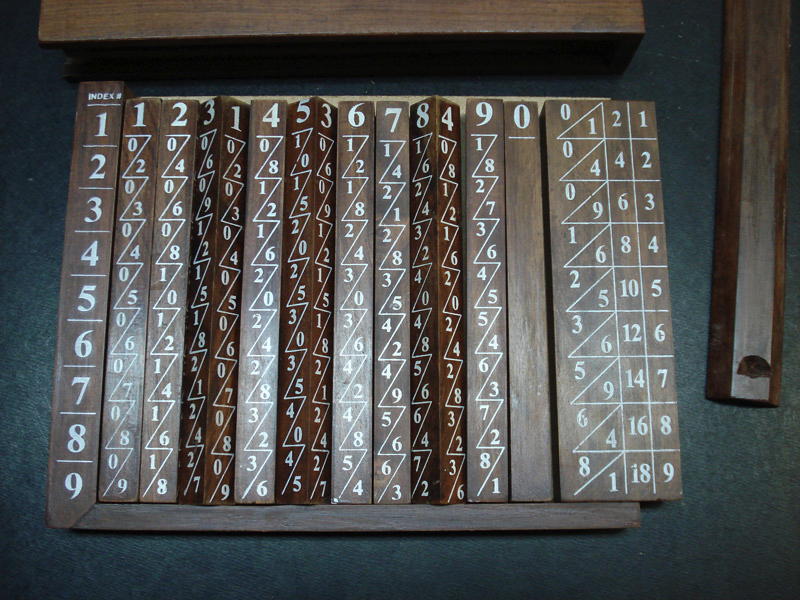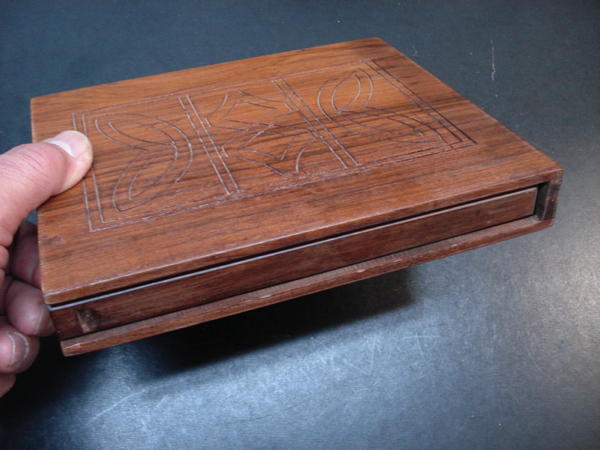
First elaborated by Joanne Nepero Barone Mechistonii (John Napier, Baron of Merchiston) in his book Rabdologiae published in 1617, Napier’s ‘bones’ (or ‘rods’) provided a means of assisting what was seen by many to be the daunting task of multiplication. The bones could be made from many materials - bone, wood, paper, metal, but whatever the form they worked by implementing an approach to multiplication known as a lattice method. Details of how to use them are available elsewhere (for example http://en.wikipedia.org/wiki/Napier’s_bones).
This set is still available on the market, being sold primarily as a mathematical curiosity. It contains the usual ten rods (here made from wood) used for multiplication and division, and and an additional rod, also included by Napier, displaying squares and cubes for use in extracting cube and square roots. The box in which it is packaged is modelled on the similar boxes in which such rods were packaged in the eighteenth century.

Further references to Napier’s rods or bones can be found in this site at:
- 1797: Napier’s Rods in “Inland Navigation”, Encyclopaedia Britannica, 3rd Edition, 1797, plate CCCXLIV, Andrew Bell copperplate. Original print article.
- Rabdologiae seu numerationis per vigula, 1628 (first published 1617) from which the book Rabdologiae may be downloaded.
Pages linked to this page
 This work by Jim Falk is licensed under a Creative Commons Attribution-NonCommercial-NoDerivs 3.0 Unported License Click on the logo to the left to see the terms on which you can use it.
This work by Jim Falk is licensed under a Creative Commons Attribution-NonCommercial-NoDerivs 3.0 Unported License Click on the logo to the left to see the terms on which you can use it.